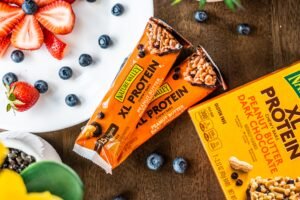The Impact of Exercise on Cholesterol Levels

Cholesterol management is a critical aspect of maintaining heart health, with a focus on balancing the levels of “good” (HDL) and “bad” (LDL) cholesterol in the body. Elevated levels of LDL cholesterol can lead to various cardiovascular issues, making it essential to adopt lifestyle changes for effective cholesterol control.
Understanding the Role of Exercise in Cholesterol Improvement
Regular exercise emerges as a potent tool in the quest to lower bad cholesterol levels. Emphasizing the significance of combining exercise with a healthier diet and lifestyle choices for optimal impact, this approach works by increasing HDL cholesterol, responsible for removing harmful LDL cholesterol from the bloodstream.
How Exercise Enhances Cholesterol Levels
The American Heart Association underscores the correlation between high cholesterol and lifestyle factors such as inadequate exercise and being overweight. Therefore, exercise becomes a fundamental solution to addressing cholesterol concerns. Furthermore, weight loss induced by exercise positively influences HDL cholesterol levels.
Recommended Exercise Duration and Frequency
For effective cholesterol reduction, the American Heart Association recommends engaging in aerobic exercises that are repetitive and engage multiple muscle groups. A minimum of 30 minutes of exercise, five to seven times per week, is the suggested regimen. Starting gradually allows individuals to adapt to the new routine.
Top Exercises for Lowering Cholesterol
- Brisk Walks or Jogging: Initiating your exercise routine with a simple walk around the block and progressively increasing the intensity can significantly contribute to lowering cholesterol. This low-impact exercise not only targets cholesterol reduction but also aids in lowering blood pressure.
- Cycling: Rediscover the joys of cycling, an activity that not only burns calories similar to jogging but is gentler on the joints. Choosing an appropriately-sized and comfortable bike can pave the way to healthier cholesterol levels.
- Swimming: For those seeking a low-impact alternative, swimming provides an effective solution. Engaging the entire body in a therapeutic manner, swimming promotes overall heart health and contributes to cholesterol reduction.
- Yoga: Even for individuals not inclined towards traditional cardio exercises, yoga emerges as a viable option. While not inherently cardiovascular, certain yoga practices can elevate the heart rate, providing benefits such as improved flexibility and mental well-being.
- Tennis: Engage in a game of tennis to combine cardiovascular exercise with social interaction. The dynamic nature of tennis involves quick sprints, lateral movements, and strategic thinking, contributing to overall fitness and cholesterol management.
Getting Started on an Exercise Plan
Before embarking on an exercise program, consulting with a healthcare professional, particularly if high cholesterol poses immediate risks, is crucial. Monitoring for warning signs during exercise is important, and practical tips for initiation include starting gradually, staying hydrated, choosing appropriate footwear, and maintaining consistency.
A Holistic Approach to Cholesterol Management
In conclusion, the incorporation of regular exercise, complemented by mindful dietary and lifestyle choices, serves as a holistic approach to cholesterol management. By understanding the impact of exercise on cholesterol levels and embracing a gradual, sustainable routine, individuals can significantly contribute to their cardiovascular well-being.






